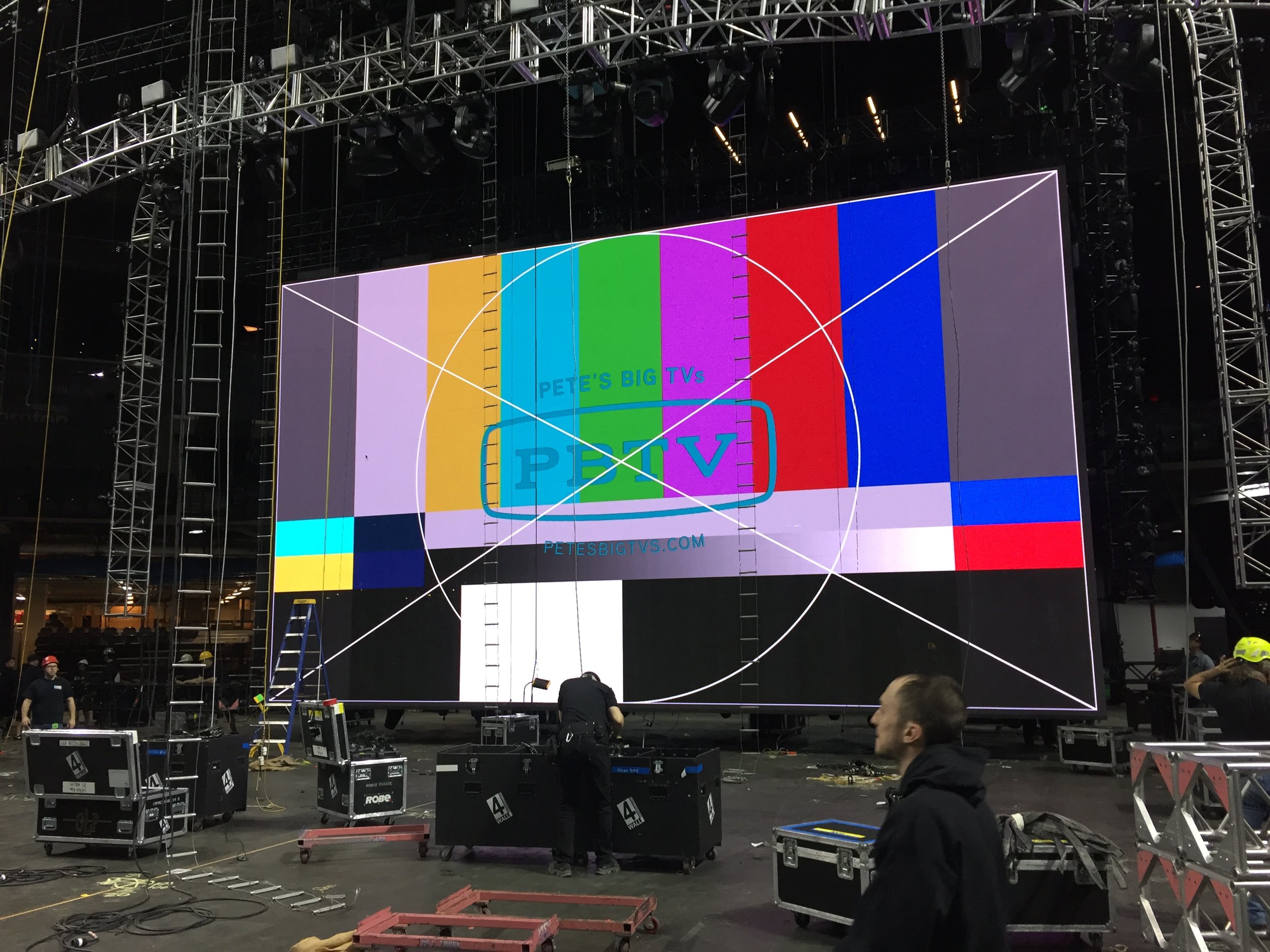2017 Rock and Roll Hall of Fame Induction Ceremony
Pete’s Big TVs has been providing video solutions for the Rock and Roll Hall of Fame Induction Ceremony every year since 1989. This year’s show, the 32nd annual ceremony, was held at The Barclay’s Center in Brooklyn, NY was even bigger than the previous year’s productions and featured a production design from Bruce Rodgers of Tribe, Inc. and a lighting design from longtime RRHOF LD, Allen Branton.
PBTV supplied a large 38’Wx24’H LED video screen consisting of the digiLED Mirage MC7mm blow through screens so Branton’s lights could shine through the screen for dynamic looks. “We used our new and improved, fresh out of the box MC7, a 7mm product from digiLED that allows some light to come through,” says Guy Benjamin, Vice President of Pete’s Big TVs. “We went with a blow through product because Allen loves to shine light through the video screen as a part of his design on this particular production.”
PBTV also supplied digiLED iMAG-R 3.2 LED video modules for video screens behind the two lecterns for the various presenters and honorees. The ultra-high-resolution 3.2mm SMD LEDs feature a black face that allowed the production to get a high-contrast image without pixelization for tight shots at the lecterns.
William Heins created the content for the screens and the video was programmed by Jason Rudolph and Tim Nauss was the screens technician. The screens technical director was Sandy Bondorowsky, who collaborated with video engineers Billy Steinberg and JC Castro.
For the 2017, Rock and Roll Hall of Fame Induction Ceremony package, Benjamin felt the highlight was the new digiLED Mirage MC7 with its 12% transparency. “The MC7, is without a doubt, the highest resolution screen that still has any level of transparency. That’s a big plus for designers to take advantage of with their creative designs. Most screens that are blow through are usually a much lower resolution. Also, the fact that we were still able to transmit a native pixel for pixel, high-resolution picture without having to do any scaling, yet still provide the transparency that Allen likes for this project."






